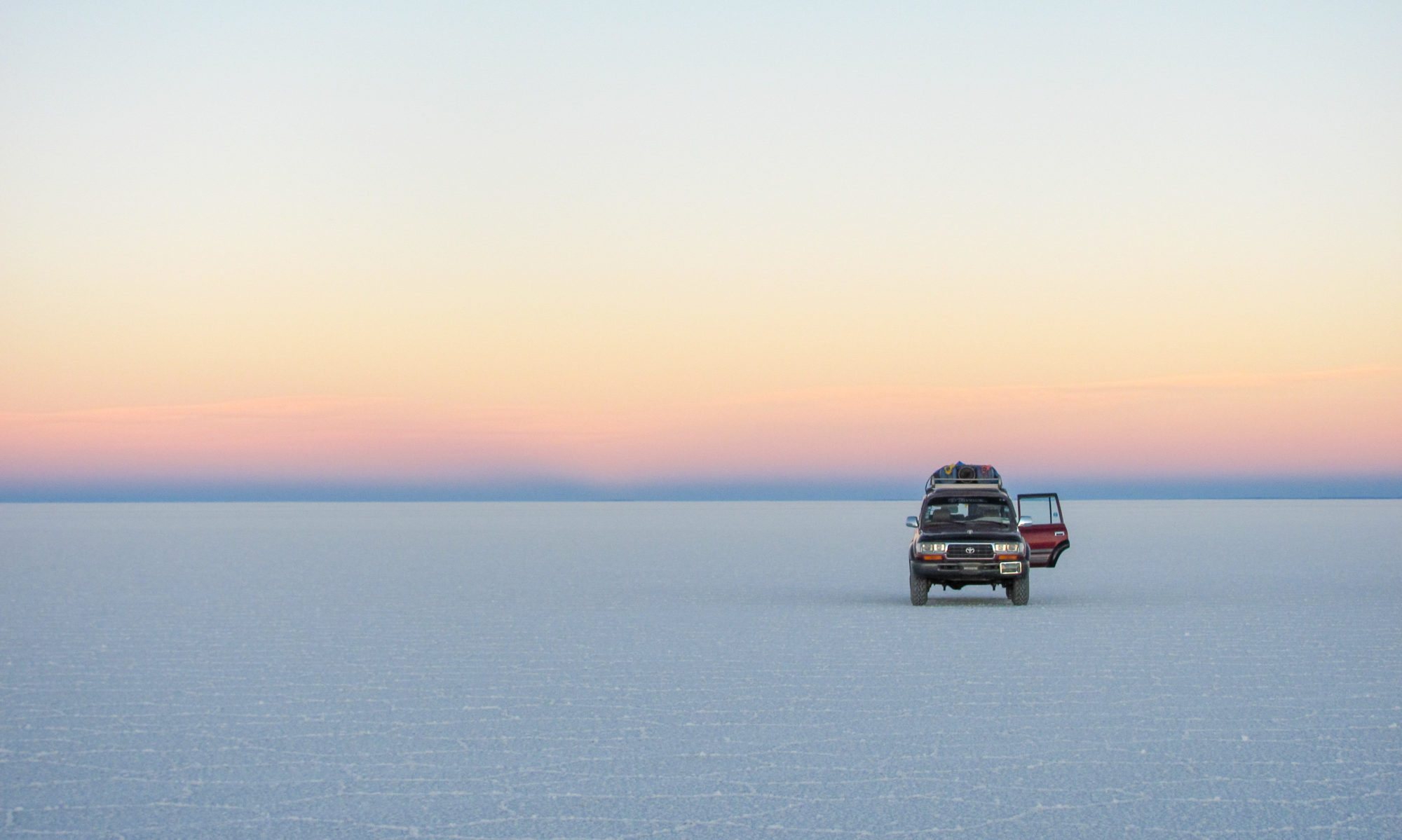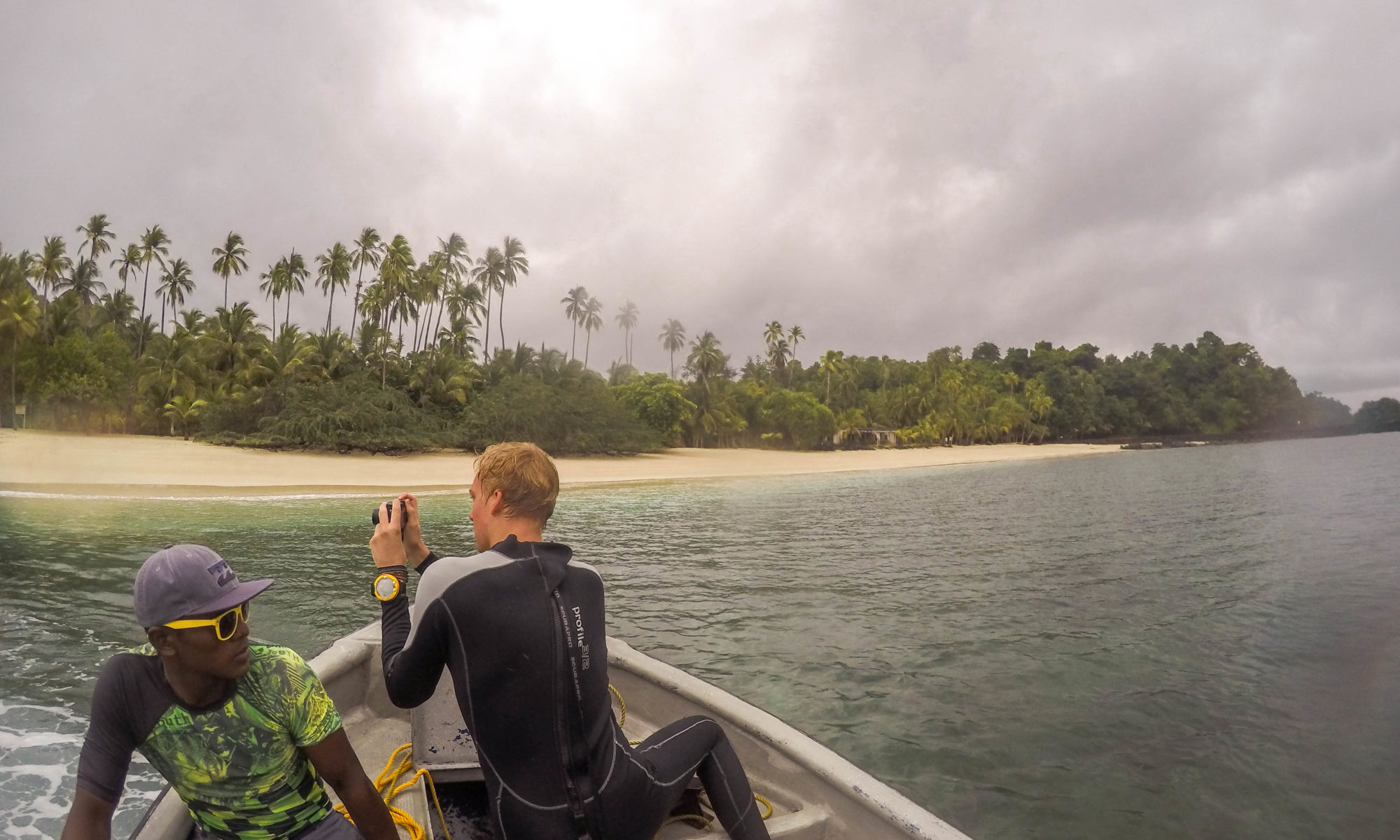Go big or go home certainly applies to diving near Coiba Island in Panama. Whether it’s the sharks in the water, the huge schools of fish or the vultures that loom in the skies ahead. Coiba isn’t the easiest diving spot in the world with its low temperatures, strong currents and rapidly shifting visibility. But the abundance of species, including the elusive whale shark, certainly makes it worth the effort.
– Practical Information –
When
This depends on your goals. January – June is the dry season with sunny days and calm seas. Come in January to see the whale sharks, March for the best chances to see Mobula (Manta) Rays. Come June, come the rainy season but this is also when the winds pick up making Santa Catalina (the fishing village neighbouring Coiba Island) a premium surf-spot. End of June is the start of the Whaling season, come in June – October to see humpbacks and Orcas. November-December means torrent rains but also 4-meter high waves, which is why some of the best surfers in the world gather here during those months.
Budget
Diving Coiba is not cheap. Expect to pay 100 – 120 USD for a day-trip, including lunch (a sandwich in the beach) and 2 dives. for a third dive, you pay about 30 USD extra. Santa Catalina itself is comparable to the rest of Panama although the small town only sports a small and expensive mini-market if you want to do your own cooking. Bring supplies.
In & Out
Getting to Santa Catalina can be a bit of a pickle. There are no trains and there is no airport nearby so your options are either driving your own wheels or taking the bus. Taking the bus from Panama City is easiest: you take a bus from Allbrook bus terminal to Sona (4.5 hours), and from there you take another bus to Santa Catalina (1.5 hours). Coming from the Bocas-islands or David you first have to take the bus to Santiago City (a stop on the way to Panama City) and switch to a bus to Sona from there, from where you take the bus to Santa Catalina. The last bus from Sona to Santa Catalina leaves late in the afternoon. Make sure you catch this one because your only alternative is an expensive taxi ride.
– Diving Coiba –
Coiba Island
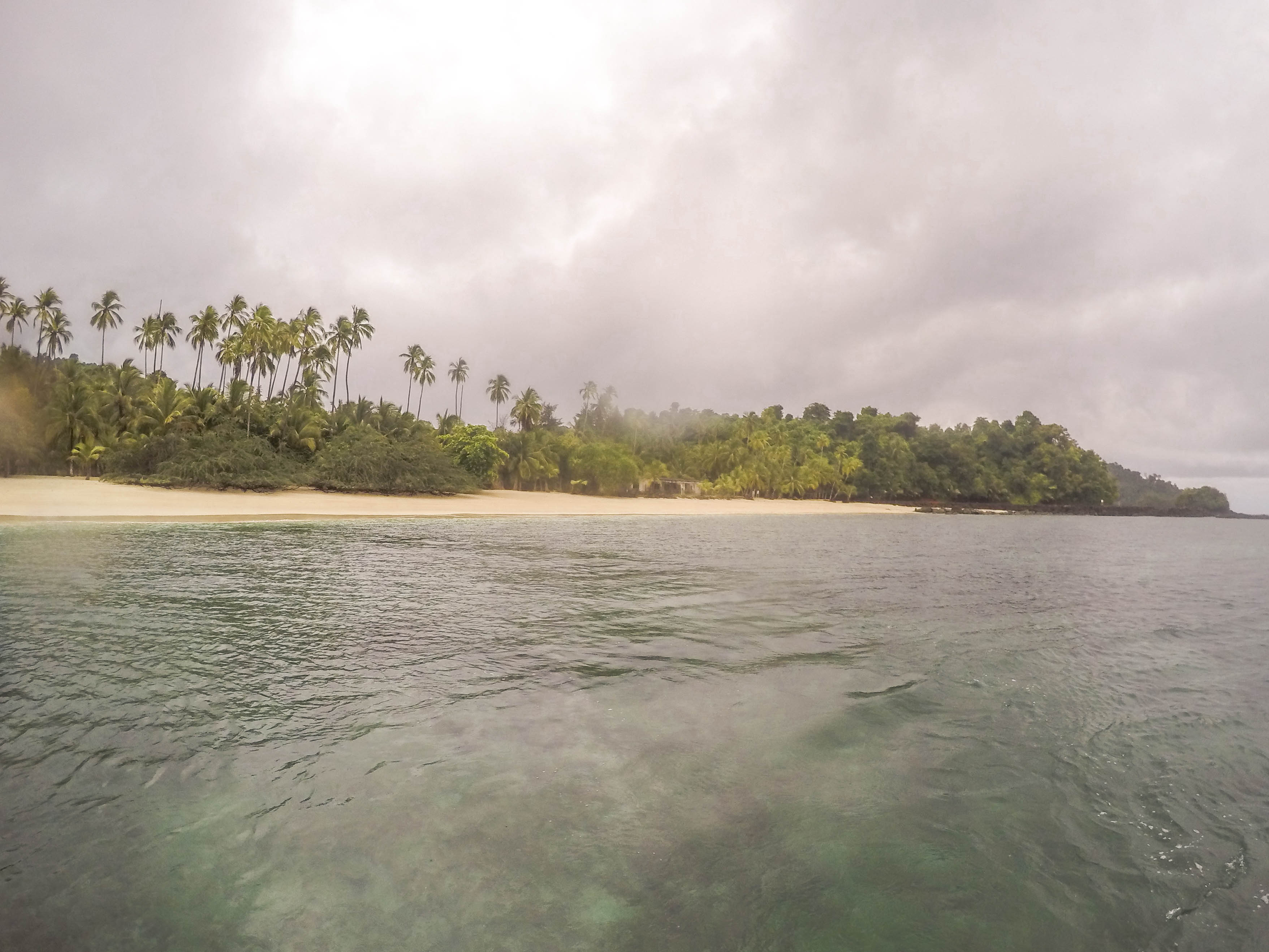
Coiba Island is a UNESCO heritage listed uninhabited island (except for a small ranger station) off the pacific coast of Panama. The whole national park (Coiba NP) covers a total of 38 islands, with Isla Coiba being the biggest. The nearest village is Santa Catalina, which will undoubtely be your base for diving around the island.
Coiba used to be a prisoners island, with the rough, shark-infested waters around it forming the perfect barrier to hinder any inmates from escaping. In 2004 the prison closed down and the island was declared a UNESCO world-heritage site. The ranger-station hosts 8 bedrooms that allow for an overnight stay, but apart from this, the island is uninhabited. This makes it the perfect refuge for many animal-species that are endangered in other parts of Panama.
Diving
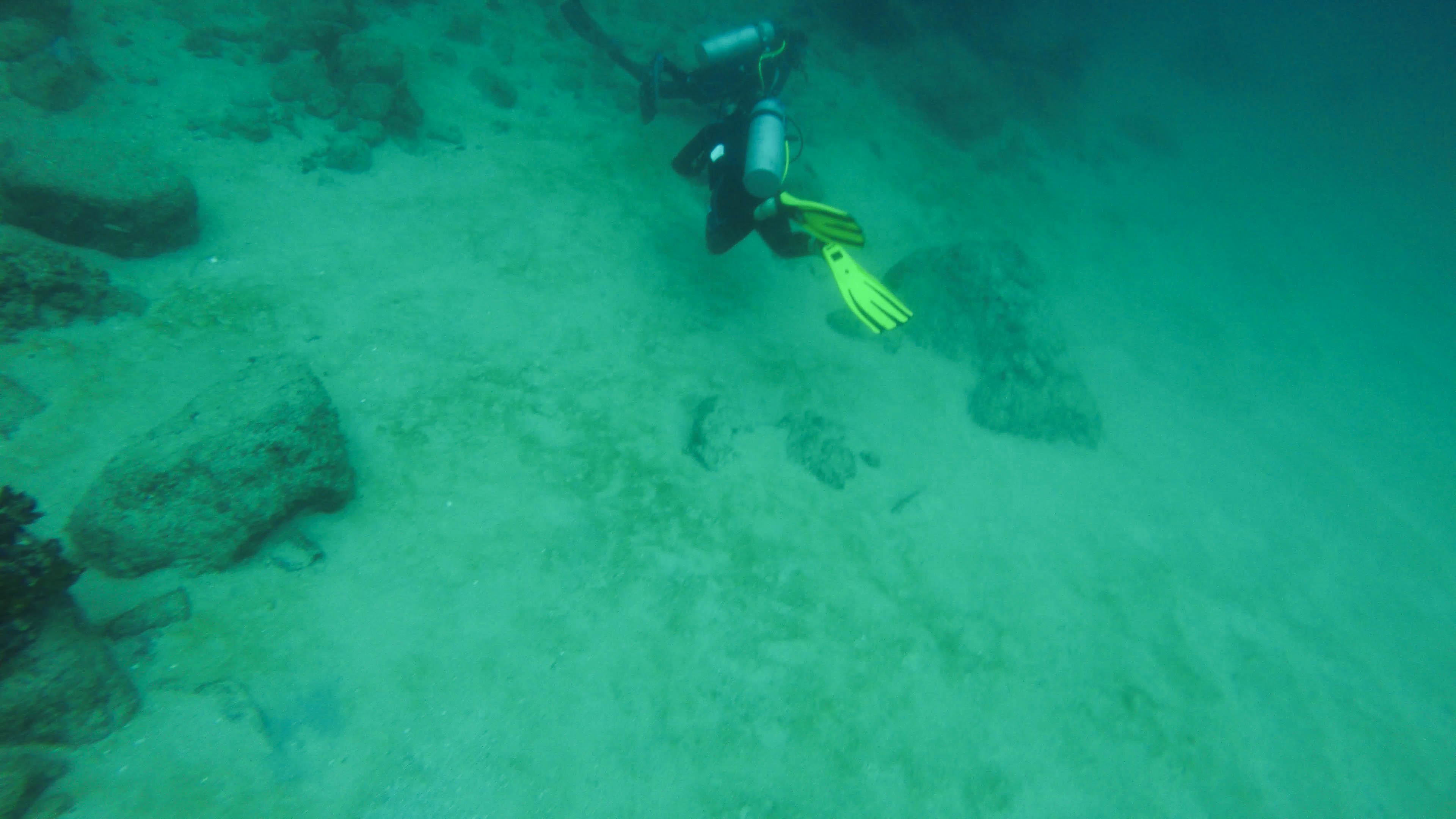
Do not expect a leisurely, warm and gentle dive as you would get elsewhere in the tropics. Diving around Coiba is hard work. The waters are cold, the visibility is far from stable and shifting currents can make a dive extremely strenuous. The reward? An abundance of species, all enlarged. In the first few months of the year, Coiba has one of highest whale shark sightings in the world. In March Modular Manta Rays join in on the game. The whole year round you have the chance to encounter dozens of different species of sharks. Rare frogfish are abundant here and schools with hundreds or even thousands of fish are hard to miss on any dive. Add to this turtles and whales at the end of the years and you’ll be hard-pressed to find better diving anywhere in the world.
I visited Santa Catalina and Coiba Island in mid-June, far from the ideal time to go. Even so, I wasn’t disappointed. After a little research, I opted for a 2-dive day-trip with a third dive option if conditions allowed for it. We set out with a group of six, me, a Dutch friend I was travelling with, a German guy I met in the Lost and Found hostel, an Australian girl that was studying to become a dive-master at the shop we were diving with, the dive-master and the shipper of the boat. Apologies for the photos in this article, my Gopro gave out a couple of minutes into the first dive, leaving me with nothing more than a couple of shitty stills to add.
The first dive, Isla Rancheria
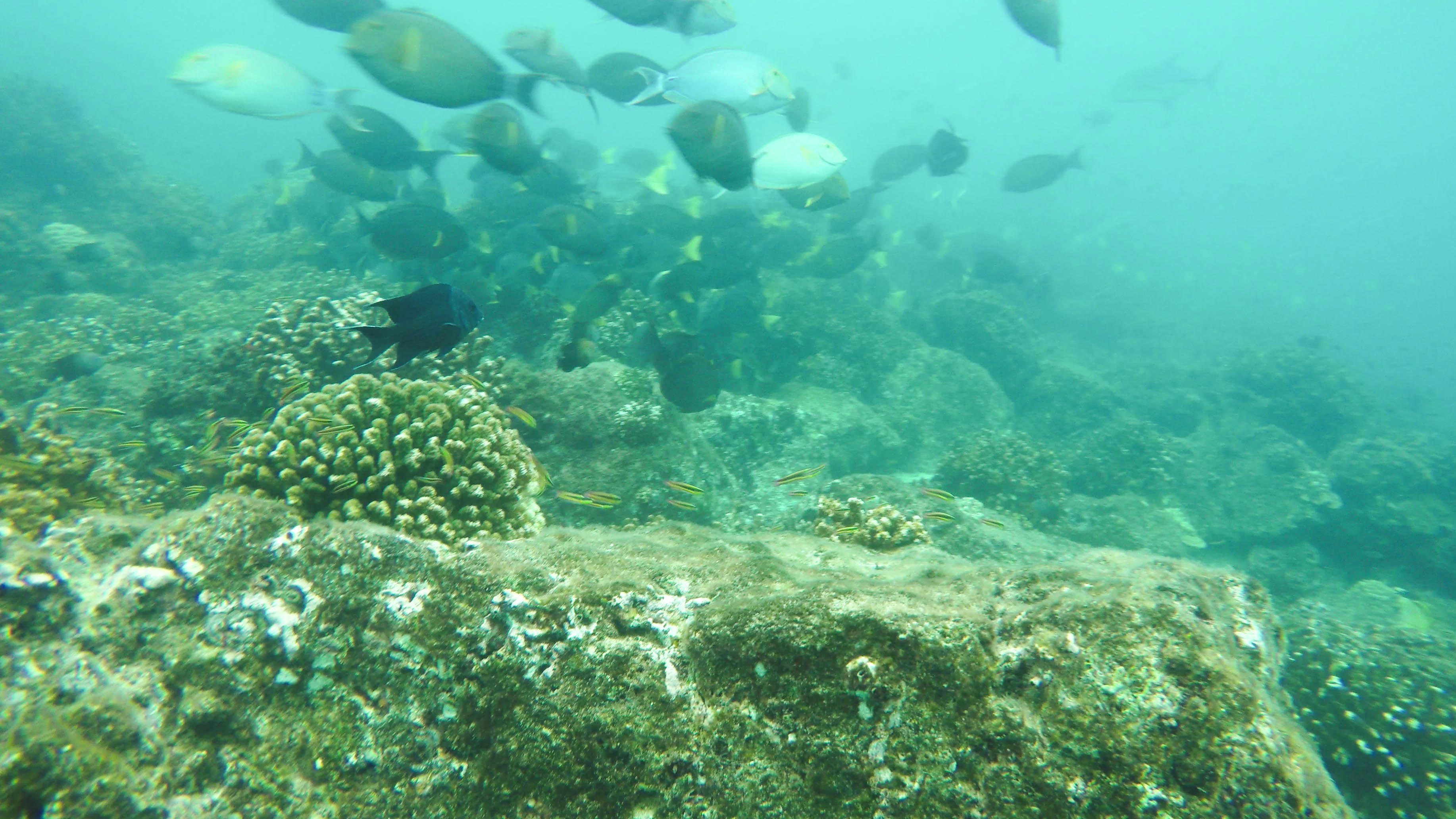
Our first dive was set at a site called Iglesia (‘church’), just off the coast of Isla Rancheria. The weather was grim looking with a slight drizzle, and the water was freezing. Once underwater, this all was soon forgotten. We immediately stumbled upon a huge school of Jacks. Everywhere you looked was the silver shimmer of Jacks crisscrossing around, nailing the act of appearing like one humongous animal. Everybody was so enthraled by the abundance of fish that we weren’t paying much attention to each other and our depth-meters. Once the fish dispersed I found myself already at ten meters of depth, with my buddy still at five. On top of this, a side-current that I hadn’t noticed before swept us about 30 meters apart. Once we got organised the fun continued. We dove to a depth of about 24 meters where we spotted white-tip reef sharks and nurse-sharks resting at the sand-bed bottom of the sea. Unfortunately, this is where my GoPro gave out, so I have little video to remember the dives by. We encountered multiple big schools of fish and lots, and I mean lots, of eels. On our way back up we found an octopus hiding in the rocks which kept us occupied for al little while. We emerged after 46 minutes, the cold waters made us waste oxygen way quicker than expected.
The second dive, Isla Don Juan
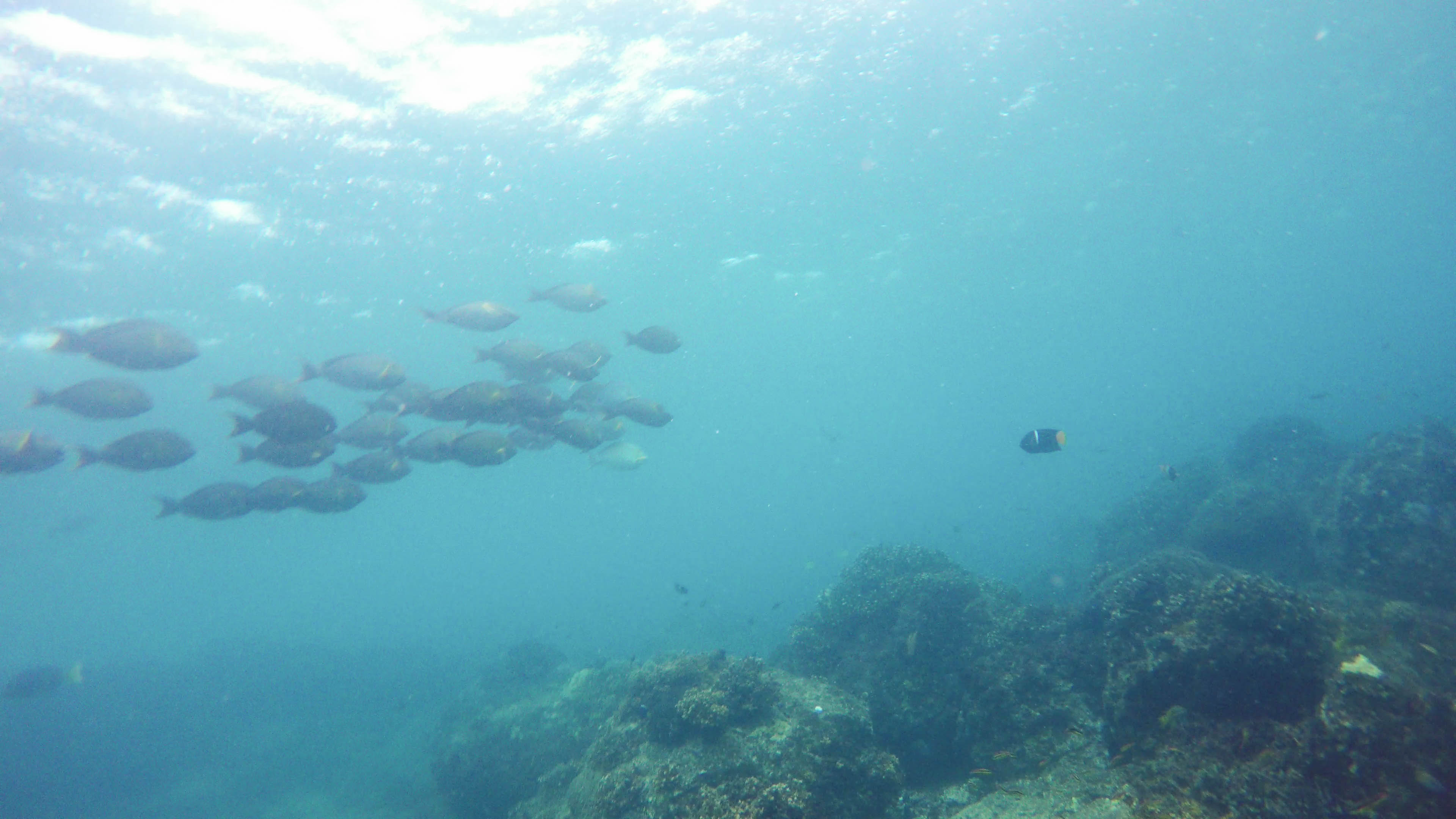
As soon as we broke the surface I felt famished. Luckily we all requested for extra sandwiches when we booked the tour, so we devoured the first one straight away. The vessel, called the Aracelli, took us to our second dive-spot Next to the Isla Don Juan. Giddy with anticipation we could not wait to get back in the water. Contrary to our best intentions, the exact same thing happened that did on the first dive. Big tuna’s this time and plenty of them. Once we found each other again it was a pleasant and easy dive. We didn’t go much deeper than 13 meters (so we would not build up too much nitrogen), and the currents were gentle. We surfaced after about an hour.
When we climbed back on board the sun broke the clouds and we couldn’t resist spending some time at Coiba Island on the yellow sand beach. We had lunch near the Ranger Station (which meant in our case eating our other sandwich) and spend some time relaxing on the beach and sharing our experiences underwater. After an hour Sabina told us that conditions allowed for a third dive.. did we want to go out again? Of course we did! Little did we know that this would be the best, but also the most painful dive yet.
The third dive, Isla Frigolis
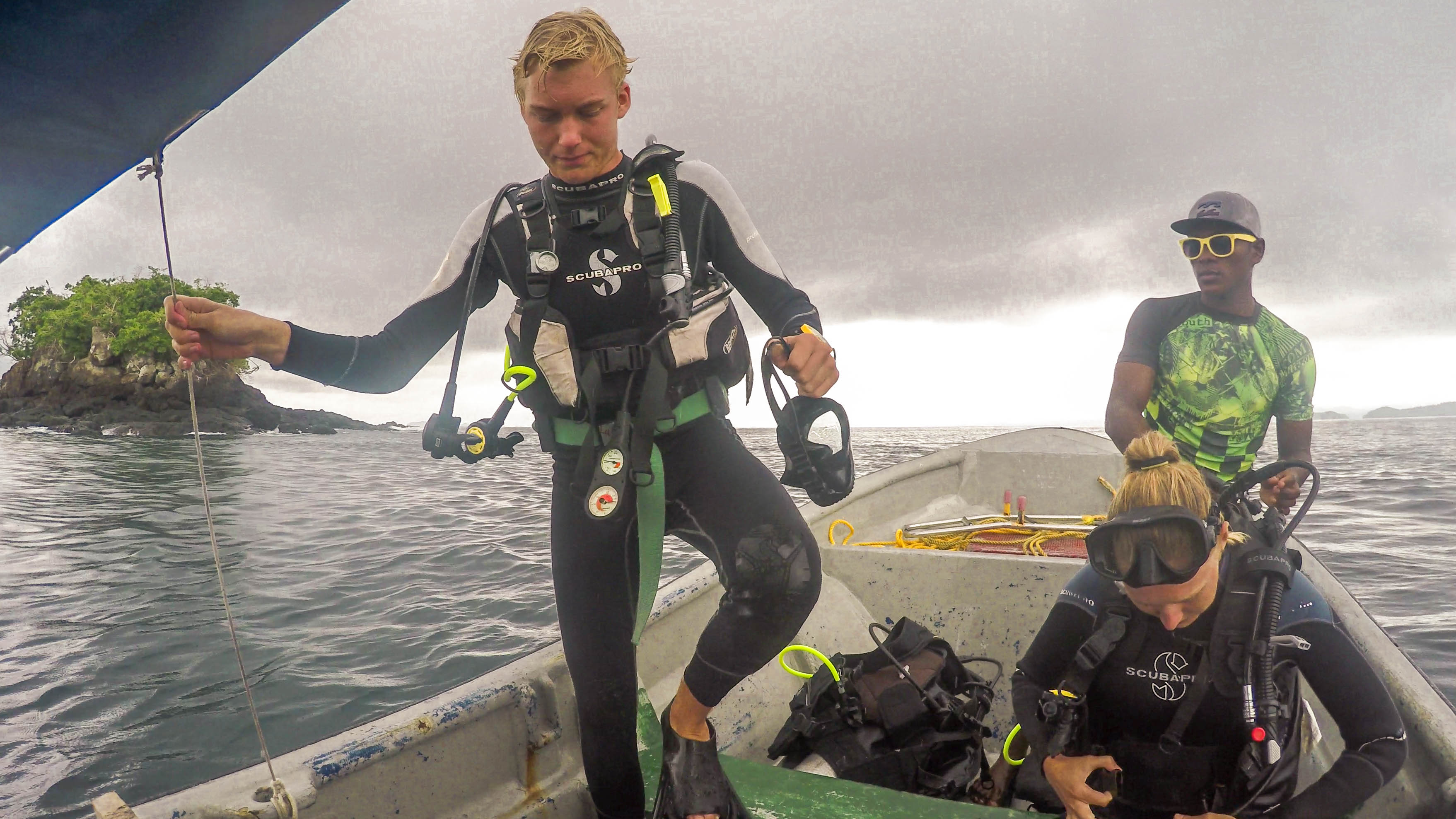
It only took a couple of minutes after we climbed back on board before we were hurrying into our wetsuits again: Mobula Manta Rays had been spotted and we were keen on being in the water with them. Once we jumped in, we saw their shadows swimming off in the distance, their speed was just amazing and there was no way of catching up. It didn’t take long to get over this disappointment because of a green turtle that turned up to say hello. We followed it to a rocky outcrop where we saw dozens of big yellow edge and green Panamic Murrays. This is also where we saw a couple of frogfish up close. Their weird bodies both disgusting and interesting to observe.
We went deeper and deeper and at the bottom, around 30 meters down, we saw as many as 16 (sixteen!) white-tip reef sharks laying on the sand-bottom. A couple of other sharks were also swimming about, some very curious encountering us as close as two meters. This certainly got the adrenaline pumping, which unfortunately also meant we were burning through our oxygen fast. It didn’t take long for someone in our group to hit 50bar, the amount we agreed upon as the limit for the start of our ascent. On our way up we felt exhilarating from seeing so many sharks. It was so intense it literally left a tingly feeling all across my skin. Especially on my hands and face… As we got to shallow waters our heart-rates went down but the tingly feeling only intensified. The water also felt a little denser somehow… Then it suddenly hit me. We were swimming in a huge school of tiny jellyfish. So small that you could barely see them with the naked eye, so dispersed that I hadn’t noticed before. I looked at my diving buddy and he had realised the same. Unfortunately, to avoid decompression illness we could do nothing else than continuing our slow ascent with the occasional safety-stop still accompanied by our tiny stingy friends.
Once we breached the surface our dive-master immediately convinced us the jellyfish were harmless, save for a little red burn that would last for about half an hour after we got out of the water. Satisfied and exhausted we returned to Santa Catalina a little before evening fell. Diving in Coiba is exhausting but incredibly rewarding.
– Santa Catalina –
The village
Santa Catalina is a tiny fishing village on the Pacific Coast of Panama. Its remote, chilled and tourism has not developed yet. While the remoteness and slow pace of life is undoubtedly its biggest charm, this is also the reason why I would not recommend staying here for more than a couple of days, unless you’re taking surfing lessons at the Oasis Surf Camp.
Santa Catalina sports two tiny supermarkets (one in front of Hostel Villa Vento Surf, and one a little further up the road) which provide enough supplies for breakfast and lunch but do not offer enough to cook a sumptuous dinner. It also has a couple of restaurants, a bakery and a handful of dive shops all offering similar packages at similar prices.
The town is very small and you can walk from the one end to the other. The main shops and restaurants are located about a 20-minute walk from the best sand-beach, which is set at Oasis Surf Camp. If you are travelling in the sunny months it might be worth the extra few dollars to spend the night at a beach-side ho(s)tel, but if you are just there to do a couple of dives I would not bother.
Surfing
Apart from diving, the other big draw to Santa Catalina is surfing. The swell is good throughout the year but from June onwards the waves start to get bigger and bigger. Oasis Surf Camp is the best place to stay if want to learn the sport of just improve your game. Villa Vento Surf Hostel is also a great hangout to meet like-minded sea-fanatics.
– Recommendations –
Diving companies
There are a handful of dive-shops around town all offering similar trips for similar prices. After some research, I found that one, however, stood head and shoulders above the others, by way of reviews, professionalism and gear. Panama Dive Center offers similar packages for similar prices but is the only school in town that provides free dive-computers to all its guest. Sabina is both a great dive-master and host, the whole team is both professional and fun. Lunch is a delicious sandwich catered by the local bakery shop, the sandwich is big enough but ask for a double if you, like me, get really hungry from spending time underwater.
Eating & Drinking
Santa Catalina is so remote that nightlife is virtually non-existent. The best place to get a drink in the evening probably varies from night to night depending on where the people choose it to be. For great pizza, I can recommend Yolo Pizza. Granted the name sounds a bit cheezy (*Padam tsssh*), but the pizzas are large, tasty and not overly expensive. Power-outages are common in Santa Catalina but luckily that doesn’t hinder the wood-burning stoves of Yolo Pizza. The shop can be found on your right-hand side when you enter the village (facing the beach), one of the first buildings after you enter town.
Sleeping
Go to Deseo Bamboo Lodge for a homey feel, good beds and tasty communal-dinners. The whole place is run in a sustainable way and a dorm bed sets you back about 14 USD. Villa Vento Surf is also a good option with its big outdoor-space, relaxing deck and nice swimming pool. If you are taking surfing lessons, it is probably best to stay right at the beach, at Oasis Surf Camp.
